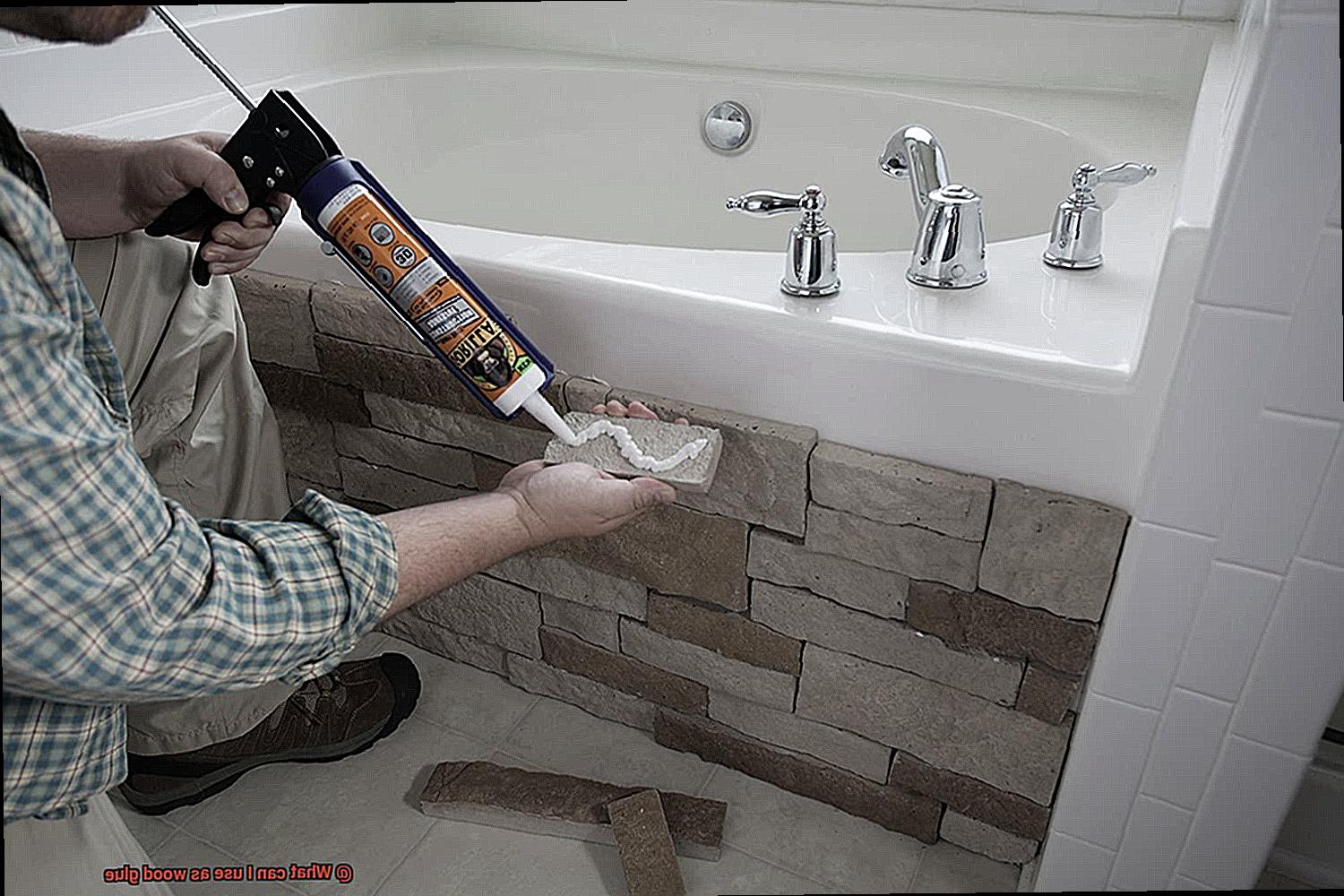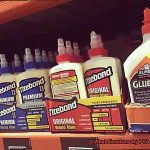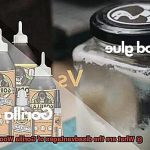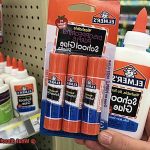Are you a woodworking enthusiast looking for the perfect adhesive to bond your wooden pieces? Look no further. Whether you’re a novice or an expert, finding the right wood glue can be a tricky task. But don’t worry – we’ve got you covered.
In this blog post, we’ll dive into the world of wood glue and explore some of the most popular and effective options out there. From traditional wood glue to cyanoacrylate (also known as super glue), epoxy, and even hot glue – we’ll cover it all.
But choosing the right type of glue is just half the battle. You also need to consider important factors such as the type of wood you’re working with, how strong and durable you want your joint to be, and how much time you have to let your glue dry.

So sit back, relax, and let us guide you through this journey of discovering what can be used as wood glue. By the end of this post, you’ll have all the knowledge you need to make an informed decision on which adhesive is best suited for your woodworking needs.
Different Types of Wood Glue
Contents
- 1 Different Types of Wood Glue
- 2 Polyurethane Glue: Advantages and Disadvantages
- 3 PVA Glue (Polyvinyl Acetate): Advantages and Disadvantages
- 4 Cyanoacrylate Glue (Superglue): Advantages and Disadvantages
- 5 Epoxy Resin: Advantages and Disadvantages
- 6 Natural Alternatives to Conventional Wood Glues
- 7 Animal Hide Glue: Advantages and Disadvantages
- 8 Homemade Flour-and-Water Glue: Advantages and Disadvantages
- 9 Conclusion
Woodworking is a gratifying and fulfilling hobby that requires the right materials and tools. One important consideration is the type of wood glue you use, as it can make or break your project.
There are several types of wood glue, each with their unique properties and benefits. Here are five common types of wood glue and their characteristics:
PVA Glue
PVA glue is the most commonly used wood glue. It’s a water-based adhesive that dries clear, is easy to clean up, and has a strong bond. PVA glue is perfect for indoor projects and can be used on various woods. Its ease of use and long open time make it ideal for projects where you need to adjust before the glue sets.
Epoxy Glue
Epoxy glue is a two-part adhesive that requires mixing before use. When mixed, it creates an incredibly strong bond that can be used on a variety of materials, including wood. Epoxy glue is ideal for outdoor projects since it’s resistant to water and extreme temperatures. Once dry, it can be sanded or painted over.
Hide Glue
Hide glue has been used in woodworking for centuries and is made from animal collagen. It creates a strong, durable bond that can be easily reversed with heat or moisture. Hide glue is perfect for antique restoration projects and other projects where reversibility is important. However, it has a short open time and requires careful attention when handling.
Cyanoacrylate Glue
Also known as superglue, cyanoacrylate glue bonds quickly and creates a strong hold. However, it’s not recommended for use on wood as it can become brittle over time. Cyanoacrylate glue is best suited for small woodworking projects or repairs where strength is important but reversibility less so.
Polyurethane Glue
Polyurethane glue is a waterproof adhesive that expands as it dries, creating a tight bond between pieces of wood. It’s ideal for outdoor projects and can be used on various woods. However, it can be difficult to work with as it expands significantly while drying and requires moisture to cure properly.
In conclusion, selecting the right wood glue is essential for the success of your woodworking project. Consider factors like drying time, strength, ease of use, and the type of wood you’re bonding when choosing a glue.
Polyurethane Glue: Advantages and Disadvantages
Polyurethane glue, also referred to as Gorilla Glue, has earned its place as a popular choice for woodworkers. Its benefits are numerous, but it’s important to consider its disadvantages before you decide to use it.
Advantages:
Polyurethane glue boasts the following advantages:
- Strong Bond: This glue creates a bond that is incredibly strong and can stand the test of time. It’s perfect for outdoor projects or any project that will be exposed to moisture.
- Waterproof: One of the most significant advantages of this glue is that it is waterproof, which means it won’t break down in wet conditions. This makes it an ideal choice for boat builders or anyone who needs a water-resistant bond.
- Fills Gaps: Polyurethane glue expands as it dries, filling any gaps in the wood and creating a stronger bond than traditional glues.
- Versatile: This adhesive can be used on a variety of materials, including wood, metal, plastic, and ceramics. This versatility makes it a great all-purpose adhesive.
- Clear Drying: Another advantage of this glue is that it dries clear, making it perfect for projects where appearance is important. You won’t have to worry about unsightly glue marks ruining your finished product.

Disadvantages:
Before you start using polyurethane glue, keep these disadvantages in mind:
- Messy: Polyurethane glue can be messy to work with, and excess glue may expand out of the joint if not applied correctly. It’s essential to use it sparingly.
- Long Drying Time: Polyurethane glue takes longer to dry than other types of glue, usually around 24 hours. This means you’ll need to plan ahead when using it.
- Can’t Sand or Paint Over: Once polyurethane glue has dried, it cannot be sanded or painted over. Any excess glue must be removed before it dries, or it will be visible.
- Strong Odor: Finally, this glue has a strong odor that can be unpleasant for some users. Make sure to use it in a well-ventilated area.
PVA Glue (Polyvinyl Acetate): Advantages and Disadvantages
As a woodworker, choosing the right glue is crucial to the success of any project. One popular type of glue is PVA glue, also known as Polyvinyl Acetate. Before diving into your next woodworking project, it’s important to understand the advantages and disadvantages of using PVA glue.
Advantages:
Firstly, PVA glue is incredibly easy to use. It can be applied with a brush or roller and cleaned up easily with water. Additionally, it dries clear, making it perfect for projects where the glue line may be visible. This feature is particularly useful when working on delicate projects that require precision.
Secondly, PVA glue is non-toxic and safe to use. You can rest assured that it won’t harm your children or pets if they come into contact with it. This makes it an excellent choice for family projects where everyone can get involved.
Thirdly, PVA glue has a relatively short drying time. It typically dries within 15-30 minutes depending on the temperature and humidity. This feature makes it ideal for projects that require a quick turnaround time.
Disadvantages:
One of the main disadvantages of PVA glue is that it is not waterproof. If used on a project that will be exposed to moisture or water, the glue can break down over time and cause the project to fall apart. Therefore, it’s important to choose another type of glue if your project requires waterproofing.
Another disadvantage of PVA glue is its limited strength compared to other types of wood glues like epoxy or polyurethane. Although it’s strong enough for most woodworking projects, it may not be suitable for projects that require an extremely strong bond.
Lastly, PVA glue has a short shelf life compared to other types of glues. Once opened, it should be used within one year to ensure maximum effectiveness. Using expired glue may cause your project to fail.
Cyanoacrylate Glue (Superglue): Advantages and Disadvantages
If you’re searching for a quick and efficient way to bond wood surfaces, cyanoacrylate glue – or superglue – may be the answer. As an expert in the field, I can attest that there are various advantages and disadvantages to using this popular adhesive as a wood glue.
On the plus side, one of the most significant benefits of using superglue as a wood glue is its fast-drying properties. It bonds surfaces in mere seconds and creates a strong hold that lasts for a considerable amount of time.
This makes it an excellent option for small woodworking projects that require speedy and easy bonding. Moreover, its versatility allows it to bond various materials such as plastic, metal, and wood without requiring clamping, saving you both time and effort in the process.
However, it’s essential to consider some potential downsides. For larger woodworking projects, superglue may not be the most practical option as it can be expensive and require multiple applications.
Additionally, it has poor gap-filling properties, which means it cannot fill gaps or voids in the wood surface. This could lead to weaker bonds and create a less sturdy end product.
Another factor to keep in mind is that cyanoacrylate glue can be brittle and prone to cracking or breaking under stress or pressure. This makes it unsuitable for projects that require flexibility or movement.
Furthermore, it’s not waterproof or heat-resistant, which limits its use in certain woodworking applications.
Epoxy Resin: Advantages and Disadvantages
As a woodworker, I’m always on the lookout for the best adhesive to get the job done. Epoxy resin is undoubtedly a top contender due to its strong bonding properties. Composed of two parts – a resin and a hardener – epoxy resin creates a seamless bond that fills gaps and cracks in the wood, making it a favorite among craftsmen.
The advantages of using epoxy resin as wood glue are numerous. Firstly, it works well on all types of wood, from hardwoods to softwoods. Secondly, it has excellent water-resistant properties, making it an ideal choice for outdoor projects that will be exposed to moisture. Plus, its longer working time gives woodworkers more room for adjustments before the glue sets.
On the downside, working with epoxy resin can be messy. The two parts must be mixed precisely and applied quickly before the mixture starts to harden. If not mixed correctly, the bond may be weaker or not set at all. It’s also essential to take precautions when handling epoxy resin since it has a strong odor and can cause skin irritation.

Cost is another factor to consider when choosing epoxy resin as wood glue. While it may be more expensive than other adhesives on the market, its strength and versatility make it an investment worth considering for serious woodworkers looking for reliable adhesives.

Natural Alternatives to Conventional Wood Glues
There are several options available that are non-toxic, affordable, and easy to make. As an expert in natural alternatives to conventional wood glues, let me walk you through the different types of natural glues available for your woodworking projects.
Animal-based glue has been used for centuries by woodworkers. Made from animal hide or bones, this type of glue requires more preparation than other types. However, it’s strong and durable, making it a great option for larger woodworking projects. To use this type of glue, you’ll need to soak the hide or bones in water for several hours or overnight until they become soft. Once the material is soft, it can be boiled to create a thick paste that can be used as glue.
If you’re looking for an alternative that’s easier to make, plant-based glue might be for you. This type of glue is made from natural materials like tree sap, vegetable starch, or flour. It’s versatile and can be used for many different woodworking projects. To make plant-based glue, collect sap from trees or mix flour or starch with water to create a thick paste.
Milk-based glue is another lesser-known natural alternative that’s easy to make and works well for small woodworking projects. It’s made by mixing milk with vinegar or lemon juice to create a protein-rich adhesive.
Overall, there are many natural alternatives to conventional wood glues that are eco-friendly, non-toxic, effective, and affordable. Other options include hide glue made from fish skins and bones or resin glue made from pine sap. Plus, these natural glues often have a longer shelf life than their chemical counterparts.
Animal Hide Glue: Advantages and Disadvantages
Animal hide glue, a traditional adhesive dating back centuries, has been used to create durable wooden items such as musical instruments, furniture, and boats. Its strong bonding capability is one of its most significant advantages. This adhesive is also easily reactivated with heat and moisture, making it an excellent choice for antique restoration work.
However, like any product, there are disadvantages to using animal hide glue. One major disadvantage is its susceptibility to moisture damage. High levels of moisture can break down the glue, causing it to lose its bonding strength. Therefore, it may not be suitable for outdoor projects or areas with high humidity levels.
Another disadvantage of animal hide glue is its difficulty in application. The adhesive requires specialized equipment and time-consuming preparation before use. It also has a short working time and sets quickly once applied, which can make it challenging for beginners to use.
Homemade Flour-and-Water Glue: Advantages and Disadvantages
Before you start mixing up a batch, it’s important to weigh the advantages and disadvantages of this simple yet effective adhesive.
Advantages:
- Inexpensive: One of the biggest advantages of homemade flour-and-water glue is that it won’t cost you an arm and a leg. With only two affordable ingredients – flour and water – you can create a paste that works well as an adhesive. This makes it an ideal choice for those who want to save money on their woodworking projects.
- Non-Toxic and Safe: Unlike many commercial wood glues that contain harmful chemicals, homemade flour-and-water glue is made with natural ingredients. This means that it’s non-toxic and safe to use, making it a great option for projects that involve children or pets. Plus, you won’t have to worry about exposing yourself or others to fumes while working with it.
Disadvantages:
- Short Shelf Life: One major disadvantage of homemade flour-and-water glue is that it has a relatively short shelf life and can spoil quickly if not stored properly. This means that it may not be suitable for long-term projects or for use in humid environments where moisture can cause it to break down.
- Limited Strength: While homemade flour-and-water glue can be effective for small-scale projects or repairs, it may not hold up well under heavy stress or pressure. This means that it may not be the best choice for larger woodworking projects where strength and durability are crucial.
fftbphh3Swc” >
Conclusion
In conclusion, selecting the right wood glue is paramount to the success of any woodworking project. The abundance of options available can make it a daunting task to determine which one is best suited for your needs. However, by taking into account factors such as drying time, strength, ease of use, and the type of wood you’re bonding, you can make an informed choice.
There are several popular types of wood glue on the market today. PVA glue, epoxy glue, hide glue, cyanoacrylate glue (super glue), and polyurethane glue all have unique properties that make them ideal for different woodworking projects.
Natural alternatives to conventional wood glues are also worth considering. These eco-friendly and non-toxic options include animal-based glues made from hide or bones, plant-based glues made from tree sap or flour/starch paste, milk-based glues made from milk and vinegar/lemon juice, and resin glue made from pine sap.
While each type of wood glue has its own set of advantages and disadvantages, ultimately it boils down to personal preference and project requirements.






